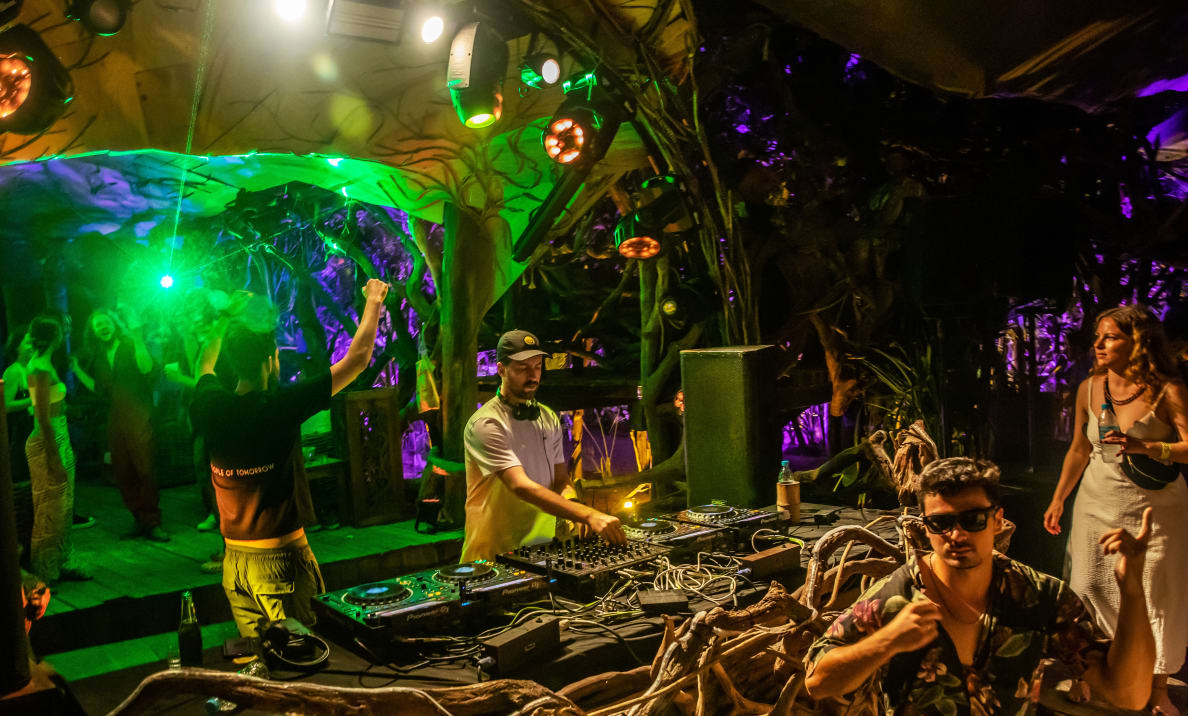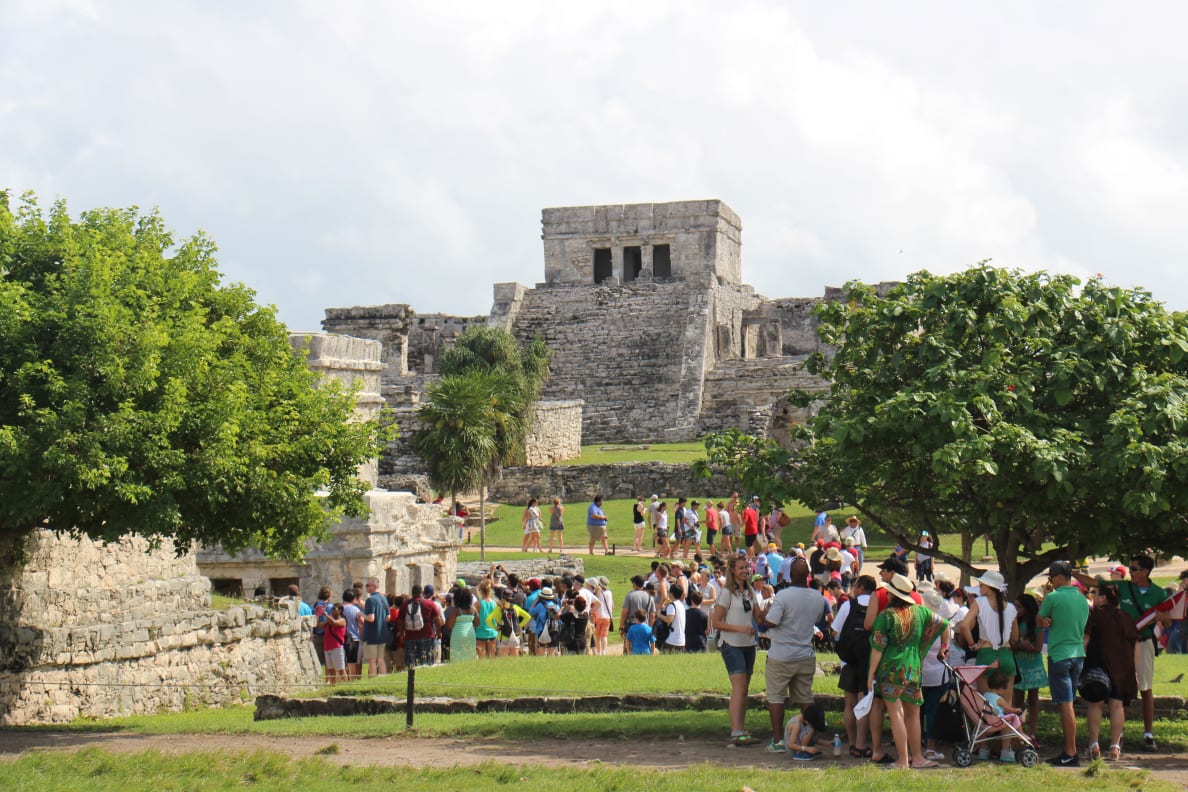I made it only a few steps out of an exorbitant taxi ride when the first person emerged from the shadows to offer me any kind of drug I could possibly want. At least half a dozen similar dudes would follow. Paradise, if you’re a 20-year-old here to “party.” Obnoxious, if you’re a grumpy middle-aged dude in the manicured jungle of . The documentary racked up more than 1 million views on YouTube, and it brought new awareness to problems most of the town’s visitors “just party on top of, with no regard to the consequences,” Appel says. “Now it’s like Miami 2.0. Now when I go there, I don’t feel like I’m in Mexico.”
Still, Appel returns regularly, staying with a friend who lives far from the beach and the techno, in a house with a rain catchment system and a modern septic tank, eager to stay connected with people who want Tulum to change for the better.
Among those people is Pablo Doma, a Spaniard who first visited Tulum in 1996, when there were only two hotels and no real road. He’d moved to Mexico City and returned to Tulum often, eventually selling everything he owned and investing in two small plots of land in the Yucatan in 2010, upon which he built five “eco-houses” with adequate septic systems, woven into the jungle. Since, Doma has seen a “new breed of investor” show up, the money-obsessed kind, with only one goal: milking drug-addled tourists for all they’re worth.
“They’re spending $700 to stay at a nice hotel, have a cleanse, party for a couple days, have dinner, then a DJ, then an ayahuasca ceremony, then a cacao ceremony. You mix these things with drugs and think you’re gonna heal yourself?” Doma says. “You’re gonna confuse yourself, sorry. Mix the politicians, the construction, the greed and the fake spirituality, this is the result. This is a mental hospital with a view of the sea.”

DJ set and party in Tulum, Mexico.
Winston Ross
Still, Doma is happy in Tulum, he says. “I’m having a coffee on the street, I never wear a mask, they never ask me for one of those vaccine passports,” he says. “I haven’t been on the beach road in a year.”
Freedom is a big draw for those who relocate to Tulum, says Cristobal Diaz, who moved in 2015 with “a broken heart and a piece of land,” he says. “This is pirate country,” he says. “If you’re an Italian with a bad background you can come here and put in a pizza oven and have a nice life.”
The development boom, “fast fashion for hotels,” is unfortunate and inevitable, he says. “The market eats everything.” But what Diaz liked about Tulum he still likes: mingling with interesting people from all over the world, swimming in cenotes, basking in a sun that never gets too intense. “It’s still Mexican Disneyland, but with this little touch of authenticity, a relaxed ambience, beautiful women and men dancing on the beach,” he says.
Grieving after the death of his grandparents in Washington, D.C., Diaz’ pal Wesley A’Harrah moved to Tulum in 2020 after a winter trip with some friends. “It was the middle of COVID and I’m swimming in the Caribbean and doing acid on the beach,” A’Harrah says. “People come here to smoke DMT and fuck. Some people use that for creepy ends, some use it for holistic healing and beautiful purposes.” A’Harrah bought a place in the jungle where a slide emerges from his bedroom and into a mini-cenote in the front yard. He started a multidisciplinary art lab there, called Caracol, inviting artists from different mediums to mix and collaborate. “There’s a very creative community here,” A’Harrah says.
Leach, CEO of Calibri Hotels, is “not loving the current stage” of Tulum, he says, but he’s hopeful that prices will come back down and things might get better. “I think we’re at a turning point,” Leach says, “where the insane pricing is going to come back down again.”
A’Harrah welcomes the idea that Tulum is losing its cool in favor of buzzier spots like Costa Rica. “It seemed like the end of 2021 and the middle of 2022 saw peak volume here,” he says. “This high season was very quiet, maybe half or a third of the people we saw last winter. It’s good to hear people saying ‘Tulum is canceled.’ It’s still easy to have your own world here.”

The Maya ruins of Tulum, Mexico with crowds of tourists.
ironypoisoning/Wikimedia Commons
It’s also easy to escape the madness, even on the beach. Mi Amor is a tranquil hotel at the northern end of the beach road, and while La Zebra lies on a busier stretch, its oceanfront cabanas offer quiet hideaways from throngs of tourists elsewhere. Even more placid is La Valise Tulum, where a small collection of cabins built on the white sand lead to a gorgeous open-air dining room and then to cabanas and beach chairs on a chill beach, on the southern end of the hotel zone. In town, the Marriott’s ALOFT Tulum has a sleek rooftop pool and an easy walk to the heart of the city. At none of these places did any DJ sets keep me up at night or drug dealers pester me. So maybe Tulum isn’t quite ruined, just yet.



